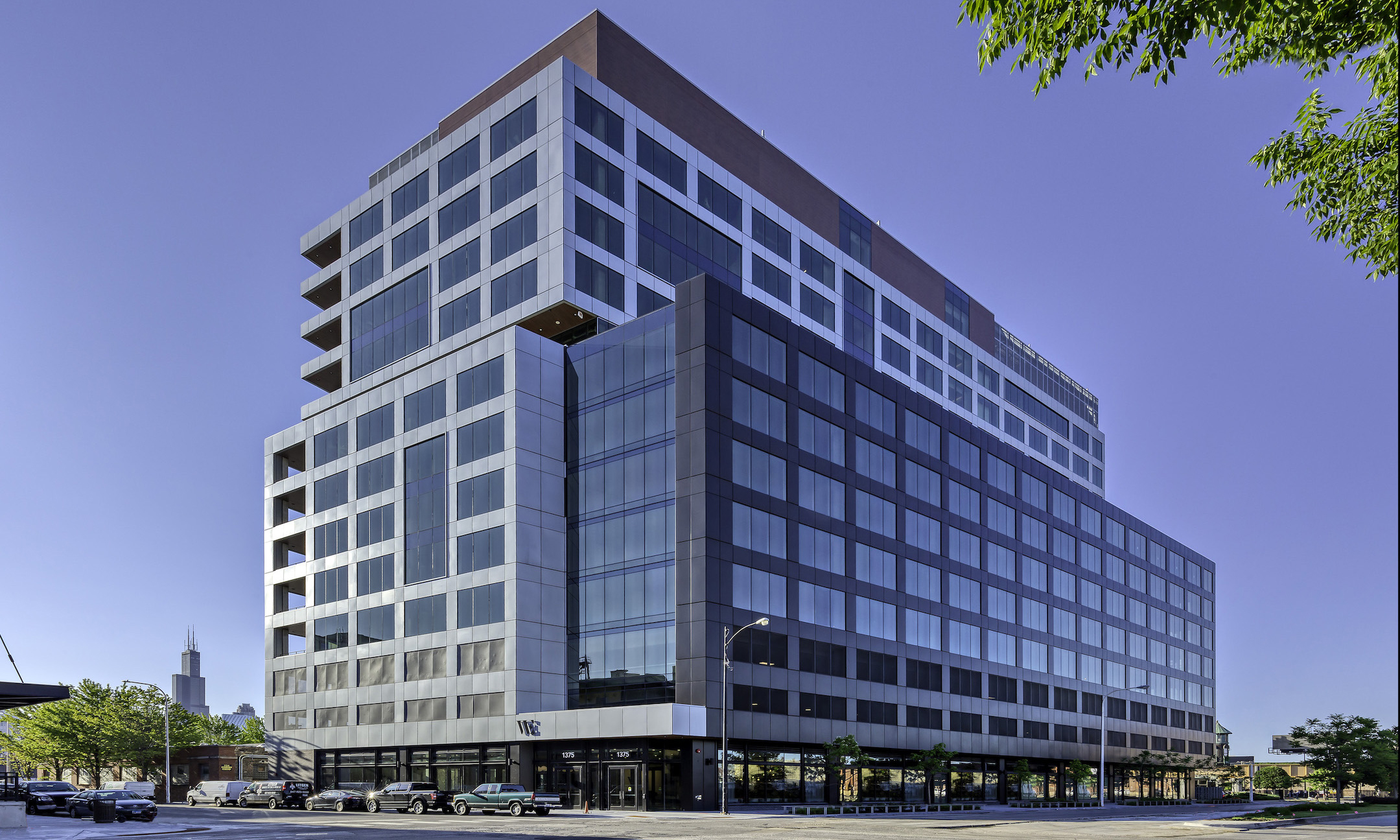For decades now, nearly all high-rise towers that come out of the ground have been skinned with glass. It’s an appealing choice of façade, as glass curtains provide ample natural light and unobstructed views.
There can be drawbacks, however. The solar heat gain within these spaces tends to be higher, affecting a building’s reliance on air handling. And those views are often only unobstructed in theory; in practice, most tenants install some sort of mechanical blinds to combat heat and glare, deviating from the aspirational aesthetics of pre-move-in marketing materials.
There is a fairly new option on the table, one that promises to eliminate blinds, preserve views, save energy, reduce glare and improve occupant health and wellness. Smart glass, often referred to as dynamic glass or electrochromic glass, is a tintable glass that can be controlled electronically. The technology has been around for decades, but only relatively recently has it been available as a commercial product, used for windows, skylights and interior partitions.
Trammell Crow Company used a product offered by View on the exterior of their latest Chicago development, West End on Fulton. View Smart Windows were installed on every floor and on every elevation, making it the first wide-scale implementation of the technology in Chicago.
Located at 1375 W. Fulton Street, West End on Fulton is a 14-story Class A office tower designed by ESG Architects. The building received its certificate of occupancy more than two months ago, though no tenants have moved in yet due to the ongoing COVID-19 pandemic. Glassdoor, a job seeking and recruitment tech firm, recently leased two floors in the building, taking a 52,000-square-foot office that is large enough to accommodate up to 400 employees.
Since no occupants have been able to move in yet, there are none of the typical testimonials for the smart glass technology. But according to John Carlson, principal of Trammell Crow Company’s Midwest business unit, prospective tenants touring the facility are quite taken with it.
“I would say the smart glass takes over about 15 to 20 minutes of our initial pitch because people are just wowed by the unique nature of it,” Carlson said. “As we talk with tech clients and even life science companies, it bodes really well with their thesis of wellness.”
That factor, wellness, is a perhaps unexpected but prominent component of View’s marketing for the technology. They claim that employees working in a space served by electrochromic glass windows report fewer headaches, less drowsiness and reduced eyestrain since the smart glass controls daylight levels in offices while allowing eyes to refocus and recover with views of the outdoors.
The windows also allow an office user to dynamically control the level of natural light entering a space, and thus reduce the need for artificial lighting. Aside from the utility cost savings, there are health and wellness factors as employees are more engaged and more productive when they have more access to natural light.
These days, there’s really only one health and wellness concern on most peoples’ minds: COVID-19. Here, too, smart glass can be beneficial. Mechanical blinds, which have to be physically adjusted throughout the day, can act as a fomite, transmitting COVID-19 and other infectious diseases from person to person. By eliminating blinds, smart glass helps move spaces to more of a touchless environment and eliminates that particular risk.
“It really hits home the message of wellness and technology, even before COVID was known,” said Carlson. “Obviously, we designed this building and selected View glass years ago. COVID has exacerbated the issue of cleanliness and the wellness of the occupants of a building.”
Trammell Crow also intends to use the technology on their new life science laboratory incubator, Fulton Labs, a 425,000-square-foot facility going up at 400 N. Aberdeen Street. As it is intended to support life sciences, laboratories, bioinformatics, medtech start-ups and similar users, health and wellness are a consideration of every part of this project’s design.
Smart glass works by electrifying metal oxide coatings in the multi-pane windows. The addition of low voltage activates the coating, transferring electrons from one electrochromic layer to another and darkening the glass. Removing that voltage reverses the polarity and brings more transparency to the glass.
The amount of electricity required to activate the smart glass is orders of magnitude smaller than what it would take to artificially light the same space, so the cost tradeoff is apparent. There are extra steps involved with installation, however, because of the electrical component. Trammell Crow enlisted Power Construction as the general contractor on both of these Fulton Market projects and they’ve been tasked with implementing the View Smart Glass installation.
As the developer, Trammell Crow is taking on some front-loaded costs to install the smart glass. While it will help reduce energy use in common areas, most of those benefits will be realized by the tenants. But according to Carlson, the tenant retention aspects of installing View Smart Windows outweighs any transference of ROI to the tenants.
“The next generation of office buildings are all going to be technology driven,” said Carlson. “Yes, you’re paying a premium upfront, but ultimately I think it’s about delivering a best-in-class product that will leave tenants happy at the end of their term.”







